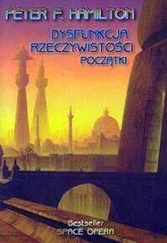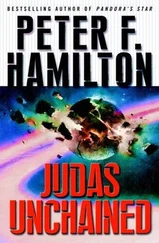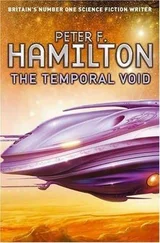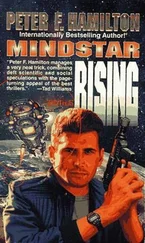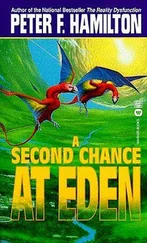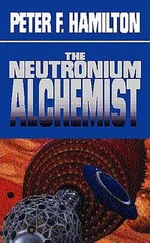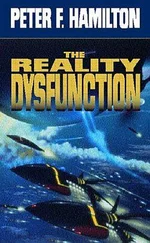Peter Hamilton - Fallen Fragon
Здесь есть возможность читать онлайн «Peter Hamilton - Fallen Fragon» весь текст электронной книги совершенно бесплатно (целиком полную версию без сокращений). В некоторых случаях можно слушать аудио, скачать через торрент в формате fb2 и присутствует краткое содержание. Жанр: Фантастика и фэнтези, на английском языке. Описание произведения, (предисловие) а так же отзывы посетителей доступны на портале библиотеки ЛибКат.
- Название:Fallen Fragon
- Автор:
- Жанр:
- Год:неизвестен
- ISBN:нет данных
- Рейтинг книги:3 / 5. Голосов: 1
-
Избранное:Добавить в избранное
- Отзывы:
-
Ваша оценка:
- 60
- 1
- 2
- 3
- 4
- 5
Fallen Fragon: краткое содержание, описание и аннотация
Предлагаем к чтению аннотацию, описание, краткое содержание или предисловие (зависит от того, что написал сам автор книги «Fallen Fragon»). Если вы не нашли необходимую информацию о книге — напишите в комментариях, мы постараемся отыскать её.
Fallen Fragon — читать онлайн бесплатно полную книгу (весь текст) целиком
Ниже представлен текст книги, разбитый по страницам. Система сохранения места последней прочитанной страницы, позволяет с удобством читать онлайн бесплатно книгу «Fallen Fragon», без необходимости каждый раз заново искать на чём Вы остановились. Поставьте закладку, и сможете в любой момент перейти на страницу, на которой закончили чтение.
Интервал:
Закладка:
Radiation shielding, too, was a constant worry beyond Earth's protective atmosphere. The only true defense against gamma rays and high-energy particles was mass, big fat solid barriers of it. Centralis was given a rocky external shield two meters thick, which was encrusted with black radiator fins. There were a few gaps through, for the axial corridors connecting the main cylinder to the nonrotating docking net at each end, shafts for the pipes carrying fluid to and from the fins, and the observation gallery.
Constellations traced a slow curve outside, although the portal was always in view. It hung fifty kilometers off Centralis's rotation axis like a blue pole star. Simon knew where it was only from the cluster of colony trains keeping station around it, slim silver bars agleam with reflected sunlight, forming their own tight little cluster.
He used his DM to receive sensor feeds from the trains, closing his eyes to be greeted with the sight of the portal directly ahead. A simple ring five hundred meters in diameter, it looked like a toroid of black hexagonal netting encasing a weak-glowing neon tube. The sight of one never failed to inspire him, reaffirming his faith in Z-B and all its endeavors. A portal was the most sophisticated, and expensive, technological artifact that the human race was capable of constructing. Only Zantiu-Braun had the facilities, money and determination to build them. Portals were one-shot wormhole gateways. Rather than the continual spatial compression that ordinary starships generated for themselves to fly through, these opened a wormhole down which any vehicle could travel. It took a phenomenal amount of energy, correctly applied against the fabric of space-time, to create the rift. The combined fusion generators of twenty starships wouldn't be able to produce a fraction of the power necessary. So Z-B manufactured an isomer based around hafnium 178 and boosted it up to its K-mixing state; the subsequent decay to its ground state produced the amount of energy required to distort space-time once it was correctly channeled and focused. But the isomer was incorporated into the solidstate wormhole generation mechanism itself, which meant that once the decay was complete the whole edifice was not only useless but highly radioactive as well. You couldn't take it apart and refill it with a fresh isomer. A new one had to be built each time.
That one-shot limitation meant Z-B had to extract the maximum amount of use from every portal. As a result, they'd designed the colony train, a spacecraft every bit as crude as an orbital-transfer vehicle, but on a much larger scale. They had the same type of engine system, fusion generators powering high-thrust ion rockets, sitting at the base of a kilometer-long girder tower. Simple enough to build, they were assembled in the redundant starship yards floating in attendance around Centralis.
The fleet of colony trains that Simon could view through his sensor feed were fully laden with descent capsules, as if the tower had been swamped by metallic barnacles. Each of the 840 capsules was an identical cone, six meters wide at the base, coated with a silvery ablative foam that would allow them a single airbrake into a planetary atmosphere. They carried four people and all the basic equipment they'd need to start life on a new planet from scratch.
To qualify for a berth, the colonists had to be thirty or younger (that is, of childbearing age) and have an appropriate stakeholding in Z-B. It was a qualification that millions of people still strove for, even though the portal worlds were nothing like the original interstellar colonies. There would never be a follow-up, no second portal delivering supplies to expand the colony, no regular starship flights from Centralis. After they arrived the colonists were on their own. If they wanted to get back in contact with Earth and the other developed worlds, they had to build their own FTL vehicles. Best estimates put that level of financial and industrial ability being achieved at least a century after the founding flight, and probably a lot longer.
As financial analysts never tired of pointing out, Z-B's portal colonies were extremely risky ventures. In an age in which most interstellar flight was now concerned with asset-realization missions, Z-B's attitude seemed almost anachronistic, especially as it was itself heavily involved with asset realization.
Simon observed the colony trains patiently, waiting as the small digital timer on the rim of his vision counted down the minutes left until activation. When it came, there was little physical evidence. The blue light of the portal ring brightened by two orders of magnitude as the isomer cascade was initiated. The aperture turned blank, obscuring the stars that had been visible in the center. Slowly the blue luminescence contained in the ring began to seep inward, forming a solid sheet of photons. It twisted in an instant, distorting backward and opening into a seemingly infinite tunnel. The intensity of the light withdrew until the wormhole walls were defined only by a faint violet haze that neither camera nor eye could quite bring into perfect focus.
A whole grid of script tables displayed by his DNI provided Simon with more information than he wanted about the wormhole's stability and its endpoint coordinate. The target was Algieba, a yellow giant binary system 126 light-years distant. Easily the farthest out that any kind of colony venture had been attempted; it was just approaching the range of the current portal capacity.
The portal operations AS picked up the beacon signal left behind by the explorer starship, allowing it to confirm the endpoint coordinate was within ten million kilometers of the target planet, an Earth-equivalent world orbiting the smaller of the two stars. It flashed a go signal to the colony trains.
Ion rockets burned with a painful near-ultraviolet gleam, moving the massive craft out of their holding pattern. The first five to slide into the wormhole were carrying descent capsules full of industrial equipment and civil engineering machinery, a basic infrastructure that would support the entire colony throughout its early years. Twenty trains of descent capsules followed, each one traversing the twenty-five-kilometer internal length of the wormhole in a little over two minutes, emerging into the double glare of the yellow stars.
Data traffic within the wormhole reached a crescendo as the trains sent back their status and location. Then the isomer cascade was exhausted and the transdimensional fissure collapsed.
Cold blue light faded from within the portal's external netting, revealing a complex braid of flat gold, ebony and jade filaments. The luster had gone from the materials; they now possessed the tarnished and brittle look of an antique, as if the wormhole had aged them centuries.
People started to make their way out of the observation gallery. Simon waited until he was alone. He canceled his DNI link with the Centralis datapool to stare at the patch of space where the dead portal floated. It was as if the extinguished circuitry still exerted some kind of weak gravitational pull on his mind. He felt an almost childish burst of jealousy against those who had gone through. They were free of Earth's myriad problems, its contamination and sullying of all human events. Even their passing made it harder for those left behind. Zantiu-Braun had weakened itself still further by giving them their fresh chance. The company could barely afford to fund a portal colony every eighteen months now; not even asset realization was plugging the financial gap anymore. Every time Simon stood in the observation gallery watching colleagues and family depart, his resolution to stay and hold back the barbarian horde decayed a fraction more. He often wondered what his mind's half-life was, at what point he would give in to pessimism and abandon Earth for his own new beginning. It could happen. The sheer inertia of humanity's stupidity would see to that.
Читать дальшеИнтервал:
Закладка:
Похожие книги на «Fallen Fragon»
Представляем Вашему вниманию похожие книги на «Fallen Fragon» списком для выбора. Мы отобрали схожую по названию и смыслу литературу в надежде предоставить читателям больше вариантов отыскать новые, интересные, ещё непрочитанные произведения.
Обсуждение, отзывы о книге «Fallen Fragon» и просто собственные мнения читателей. Оставьте ваши комментарии, напишите, что Вы думаете о произведении, его смысле или главных героях. Укажите что конкретно понравилось, а что нет, и почему Вы так считаете.


